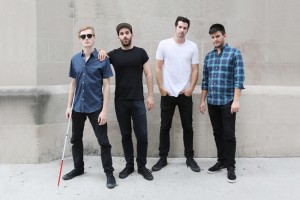“A child is only as disabled as their environment and the beliefs of the people around them.” – Bala Pillai DPT, PCS
“I love water.” I pointed to myself, made a heart, and then splashed at the deaf girl wearing a small floatation device. Her laughter ricocheted off the walls, temporarily masking the sound of waves crashing against the side of the pool. Her aide looked half amused, half stern as she gestured to the wheelchair, indicating that aquatic therapy time was over.
Last spring break, I volunteered at Crotched Mountain School, a rehabilitation center and school for children with a variety of physical and emotional disabilities. There, I was able to work in the aquatic center and follow them on land in their day-to-day educational activities. The ~100 students at Crotched Mountain had:
- a personalized educational program tailored to their individual abilities
- access to some of the best occupational therapists
- a staff to student ratio of 3:1
All to assist them in become independently functional adults.

A sip-and-puff wheelchair for those with limited motor functionality.
It was also a high-tech hub, with AAC devices for students with a communication disability and sip-and-puff wheelchairs for those with cerebral palsy. The week I was there was coincidentally also Spirit Week, and the children were treated with wheelchair basketball games, school dances, and the typical set of events found at a traditional secondary school.
As if the place was a semblance of normality. A utopian world for people with disabilities.
.jpg)
Basketball Games During Spirit Week
But not quite. Crotched Mountain is part ski resort, part rehabilitation center. While on one side of this mountain, we individuals with two properly functioning legs can enjoy a leisurely afternoon zipping down the trails, on the other side the daily challenges the inhabitants experience go largely unnoticed.
While these children were surrounded by some of the best therapies and assistive technology devices to help them lead more independent lives, they have become cutoff from the rest of society—treated more as patients than as students. Isolated from us, they are less exposed to the prejudices against disability rampant in society; but, in turn, the rest of society is less aware of the true abilities of the disabled and retain their biases, as a result.
I don’t want to write a whole “call to action” for people to change their biases, because the scope of that project would be enormous. So instead, I ask to step over the boundaries of segregation and go see for yourself the beauty and verve on the other side of the mountain.
Then perhaps together, we can push for a more inclusive, more accepting, more integrated environment that all can live in.











